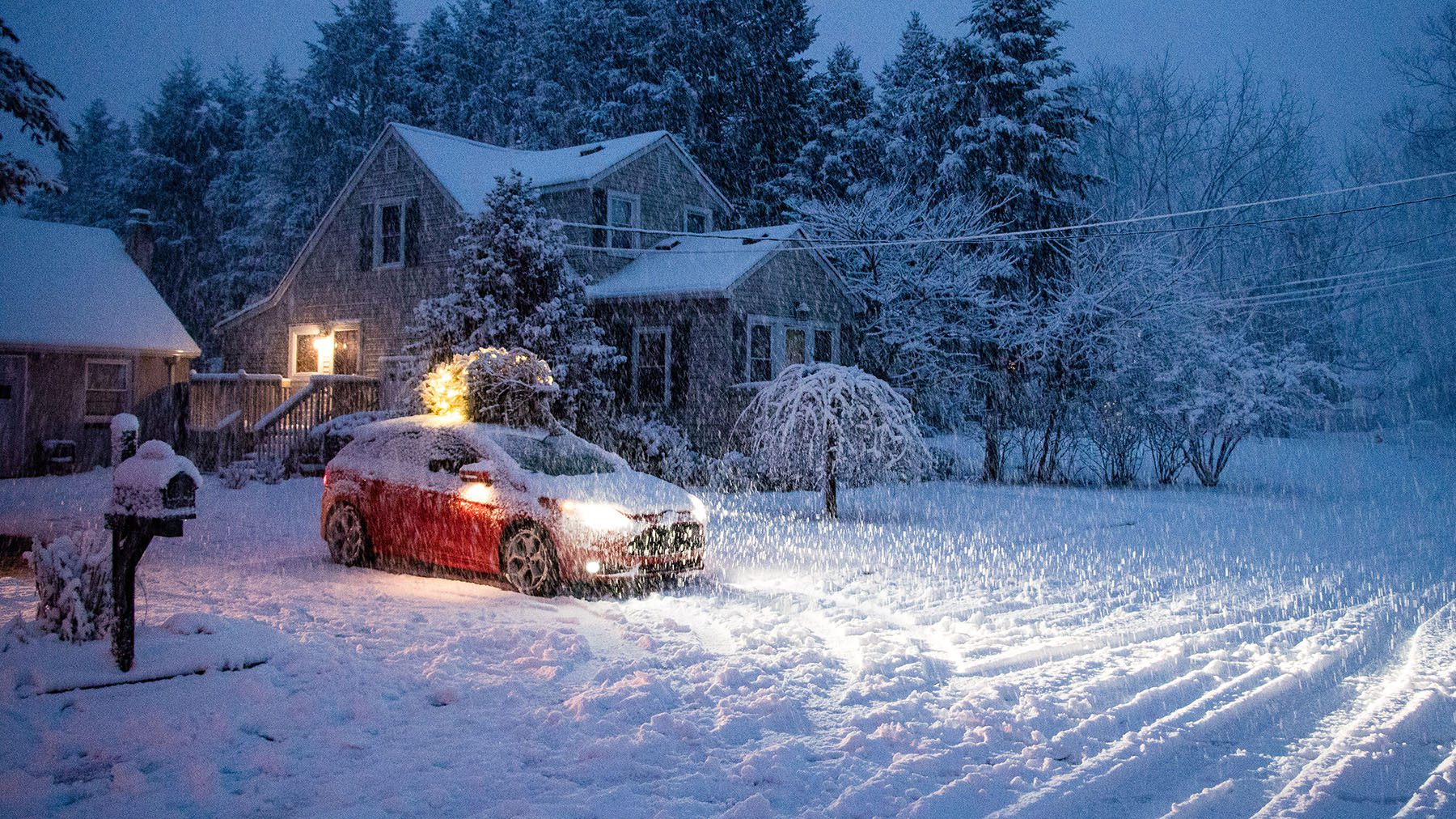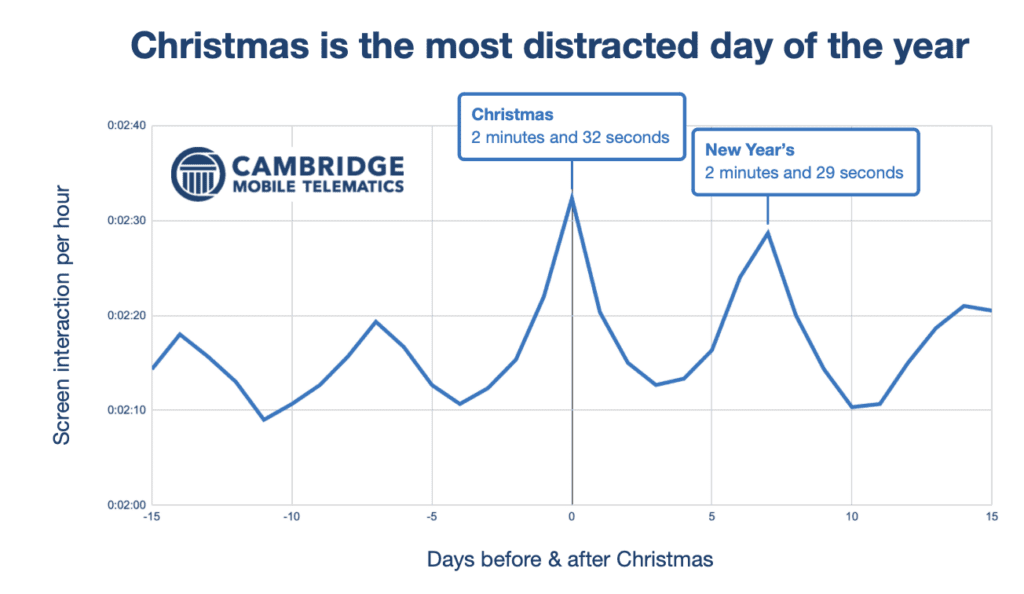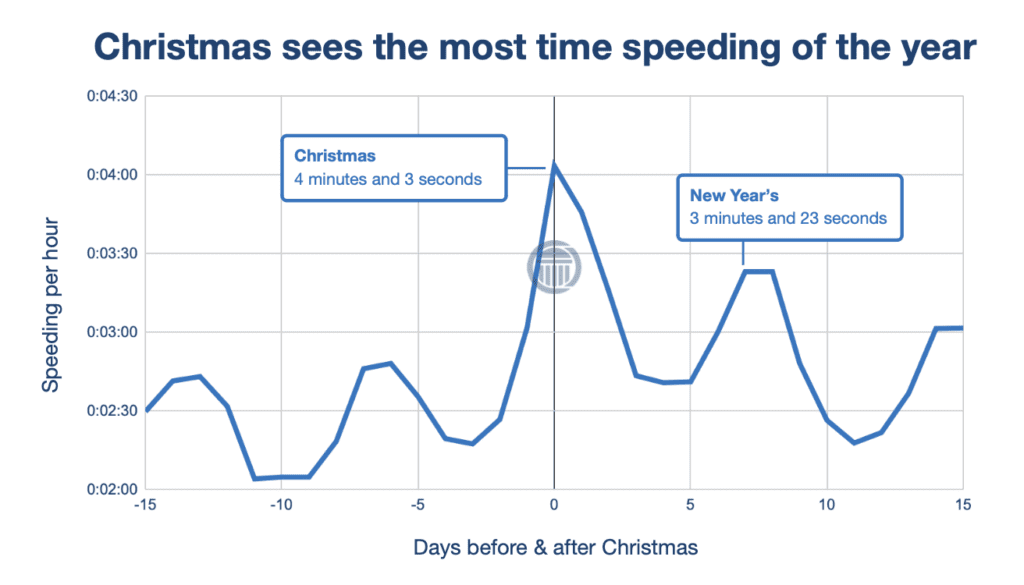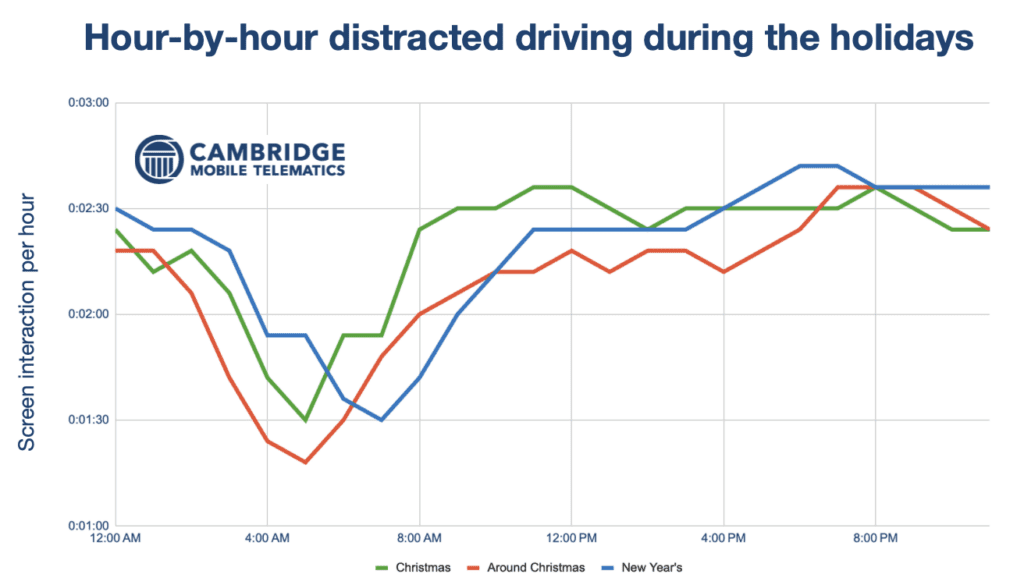Road Risk Alert: It’s the Most Distracted Time of the Year

The hustle and bustle of the holiday season brings excitement and anticipation for Christmas and New Year’s. But it also leads to a significant increase in distracted driving and speeding.
According to a new CMT analysis, Christmas and New Year’s Day are the most distracted days of the year. Christmas also sees the most speeding of any day of the year while New Year’s comes in fourth. CMT analyzed driving patterns and behaviors two weeks before and after each holiday from 2020 to 2023, covering over 100 million car trips.
On an average day around Christmas, drivers spend 2 minutes and 16 seconds per hour using their phones behind the wheel. On Christmas Day, distracted driving rises to 2 minutes and 32 seconds per hour, 12.1% more than the surrounding days. CMT defines distracted driving — screen interaction — as when a driver taps on the screen while the vehicle is traveling over 9 mph.
New Year’s Day sees similar trends as Christmas. On the days around New Year’s, drivers spend 2 minutes and 17 seconds per hour driving distracted. On New Year’s Day, distraction increases by 8.9% to reach 2 minutes and 29 seconds, the second most distracted day of the year. New Year’s Eve is the third most distracted day, with 2 minutes and 24 seconds.

The 12.1% surge in screen interaction on Christmas carries severe and fatal consequences. CMT’s research shows that for every 10% rise in distracted driving, the crash rate increases by 1.4%. We estimate the increase in distracted driving on Christmas has caused 2,000 additional crashes, five fatalities, and $47 million in economic damages over the past three years. The impact for New Year’s Day and New Year’s Eve is similar.
The trend of distracted driving spiking on Christmas has held true for the past few years. In 2020, drivers spent 2 minutes and 19 seconds on their phones during the days around Christmas, jumping to 2 minutes and 38 seconds on Christmas Day. 2021’s distraction figures were lower overall during the holidays, but still saw a dramatic 11.6% increase on Christmas. In 2022, the increase in time spent driving distracted on Christmas was 11%.
While Christmas is consistently the most distracted day of the year, there is some good news. Distracted driving around Christmas time has fallen every year since 2020. In 2020, drivers spent an average of 2 minutes and 38 seconds per driving hour engaging with their phones. In 2021, this number fell to 2 minutes and 32 seconds. It fell another 5 seconds to 2 minutes and 27 seconds in 2022.
Christmas isn’t just the most distracted day of the year. It also sees the most speeding of any day. During the two weeks before and after Christmas Day, drivers spend 2 minutes and 41 seconds speeding. On Christmas Day, speeding increases to 4 minutes and 3 seconds, a 51.2% increase. December 26 has the second most speeding followed by July 4th and New Year’s Day. CMT defines speeding as traveling more than 9 mph over the posted speed limit.

Speeding, when combined with distracted driving, leads to more severe and deadly outcomes. The difference between a crash at 45 mph and one at 40 mph can be the difference between life and death, as shown in this IIHS analysis. A distracted driver will hit the car in front of them at full speed.
Holidays impact hourly distraction trends
Distracted driving on Christmas Day has a different pattern than the surrounding days. For example, in 2022, distracted driving on Christmas peaked at 2 minutes and 36 seconds during the late morning, from 11:00 a.m. – 1:00 p.m., while for the surrounding days, it reached its highest point at 8:00 p.m. Distraction on Christmas starts early, hitting 2 minutes and 24 seconds by 8:00 a.m., and stays at or above that level until midnight. On the surrounding days, distraction hovers around 2 minutes and 18 seconds until rush hour, increasing at 6:00 p.m. through 10:00 p.m.

Distracted driving on New Year’s Day in 2022 tells a slightly different story. Distracted driving on New Year’s Day was 14.6% higher during the early morning hours compared to the days around Christmas, from midnight until 7:00 a.m. Distraction was slower to peak on New Year’s Day, plateauing at 11:00 a.m. until growing from 4:00 p.m. to 7:00 p.m., where it peaked at 2 minutes and 42 seconds per hour.
Ensuring a safe driving holiday season
As we’ve seen, the holiday season experiences the highest levels of distracted driving and speeding throughout the year. The data reinforces the need for all drivers to stay focused, put the phone down, and check their speed to ensure they arrive safely. These behaviors, which are simple to adopt but hard to maintain, would create safer roads for everyone during the holiday season and beyond.